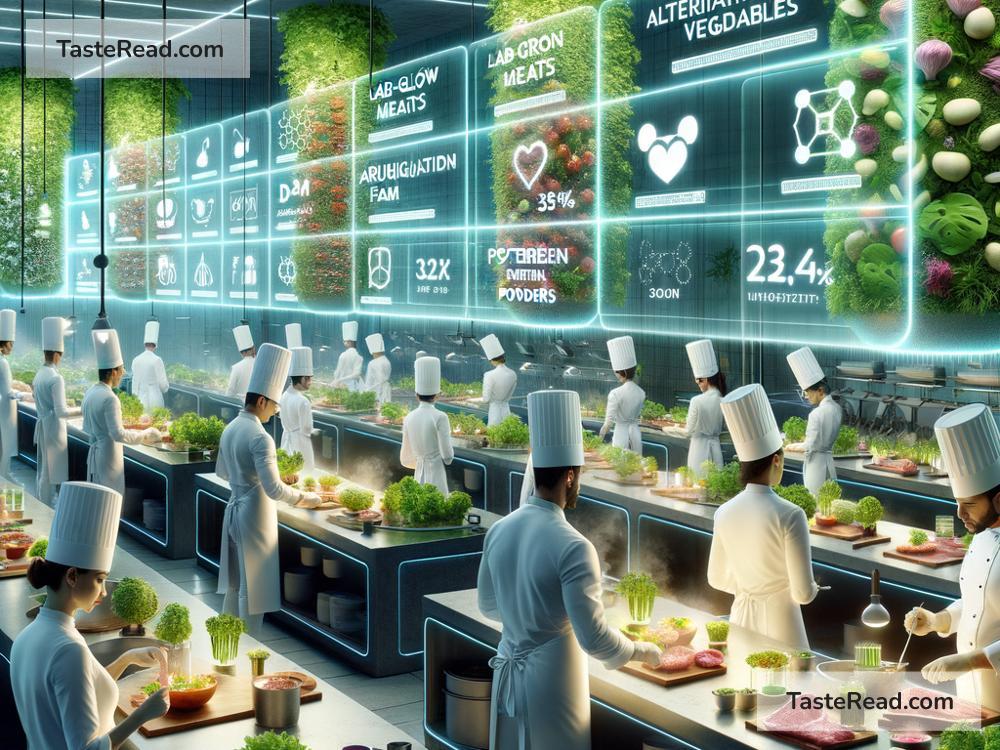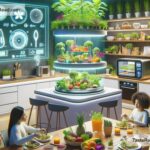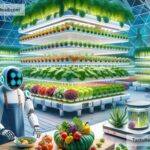The Future of Food: A Holistic Path Toward Sustainable Solutions
Food is one of the most basic and essential parts of our lives. It nourishes us, gives us energy, and brings people together. But have you ever thought about how food systems are connected to much bigger issues—like climate change, health, and even social justice? The way we produce, distribute, and consume food can have a huge impact on the planet and its people. As the world faces challenges like population growth, environmental degradation, and food insecurity, the future of food is an important topic. To solve these issues, we need to think about food holistically; we must look at the big picture and explore systemic solutions that benefit everyone.
Why Do We Need Change?
Our current food system has some serious problems. While it helps feed billions of people across the globe, it often relies on processes that harm the environment and may not be sustainable in the long run. For example, industrial farming uses a lot of water, fertilizers, and pesticides, which can damage the soil, pollute water supplies, and harm ecosystems. At the same time, food waste is a huge issue—millions of tons of food are thrown away each year while millions of people go hungry. Combine that with unhealthy diets contributing to diseases and rising global temperatures affecting crops, and it’s clear that our food system can’t continue as it is.
What Does Holistic Thinking Mean?
To fix issues in the food system, we need to take a holistic approach. This means looking at every piece of the puzzle—how food is grown, transported, sold, eaten, and even thrown away—and understanding how these parts fit together. When we focus on systemic solutions, we’re recognizing that food doesn’t exist in isolation. It’s connected to economics, the environment, health, technology, culture, and government policies. A change in one area will often affect other areas, so we need to act carefully and focus on solutions that balance all these factors.
Practical Holistic Solutions
There’s no single fix for the future of food, but here are some examples of systemic solutions that could create a better world for everyone:
1. Regenerative Agriculture
Traditional farming methods can strip nutrients from the soil and harm the environment. Regenerative agriculture aims to reverse this by focusing on practices that improve soil health, increase biodiversity, and store carbon in the ground. For example, farmers can rotate crops to avoid exhausting the soil, use cover crops to protect against erosion, and avoid heavy chemical fertilizers. Regenerative agriculture isn’t just about growing food; it’s about healing the earth while producing what we need.
2. Reducing Food Waste
Nearly one-third of all food produced globally is wasted. This waste contributes to greenhouse gas emissions and represents a massive missed opportunity to feed people in need. Holistic solutions aim to reduce waste at every level. For example, governments can invest in food recovery programs that redirect surplus food to hungry families. Farmers can focus on using “ugly produce” that would normally be thrown away, and consumers can make an effort to buy only what they need. Even technology can help—for example, apps and programs can connect businesses with organizations that redistribute food.
3. Balanced Plant-Based Diets
Shifting diets toward plant-based foods could play a major role in reducing the environmental impacts of food systems. Meat production, especially beef, uses massive amounts of land and water and creates large carbon emissions. While the solution isn’t about forcing everyone to completely give up meat, encouraging a balanced diet with more fruits, vegetables, grains, and alternative protein sources (like beans, lentils, or lab-grown meat) can make a difference. This shift can benefit the planet and improve human health.
4. Localized Food Systems
Transporting food over long distances increases carbon emissions and makes food systems more vulnerable to disruptions. Instead of relying on imports from thousands of miles away, communities can prioritize localized food systems. This means growing crops closer to where people live and supporting local farmers and producers. Smaller, local systems are often more resilient and can keep food fresher while supporting local economies.
5. Adopting Food Technology
Technology can play an important role in creating sustainable food systems. For example, vertical farming uses less land and water while growing crops indoors in stacked layers. Precision agriculture helps farmers use resources more efficiently with sensors and data, reducing waste. Innovations like lab-grown meat and plant-based alternatives can also change how we think about protein production.
Collaboration Is Key
To build a better future of food, we need collaboration. Scientists, farmers, governments, businesses, and consumers all have roles to play. Governments can shape food policies that incentivize sustainable practices and make healthy food accessible. Farmers can adopt eco-friendly methods. Technology companies can innovate new solutions, such as biodegradable packaging or better ways to store food. Consumers can choose sustainable options and support change with their voices and wallets. Together, we can create a system that works for people, the planet, and future generations.
A Bright Future for Food
The future of food doesn’t have to be gloomy. By thinking holistically and pursuing systemic solutions, we can address the complex challenges our food system faces. Imagine a world where food production heals the planet instead of hurting it; where everyone has access to nutritious meals; and where we waste less and share more. This world is within reach if we work together.
Food is about more than just eating. It’s about caring—for our health, our communities, and the Earth. Let’s take action today so the future of food can be something we’re all proud of.


